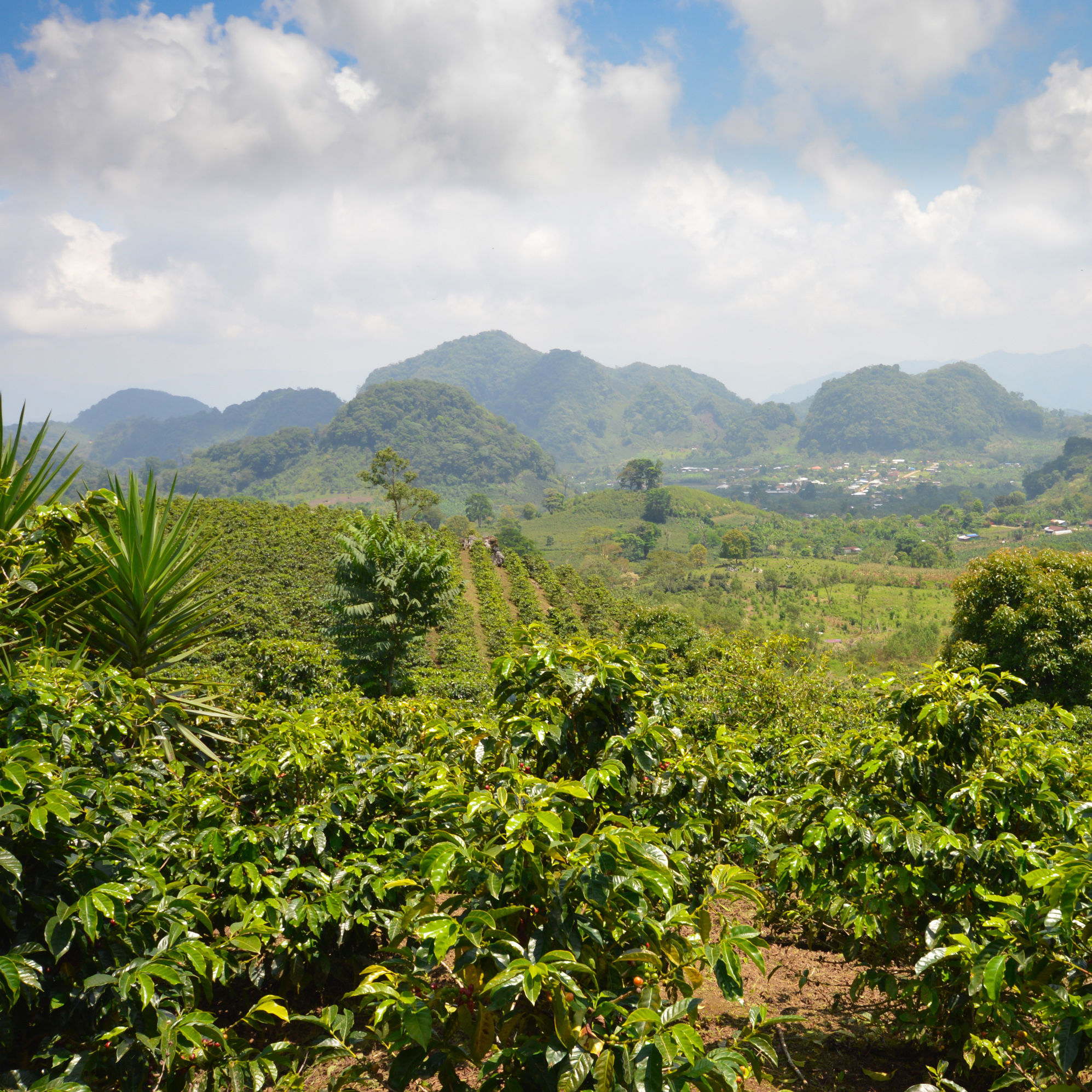
Honduras
Population: 9,588,000
Surface area: 112,492 km²
Population density: 86.6 inhabitants/km2
Annual production: 331,200 tonnes
Notes on aroma: Medium-bodied, with a nice level of acidity. Some of the most distinctive aromatic profiles come from Honduras.
History
The first coffee bushes are believed to have been planted in Honduras in the late 18th century. Until the 1990s, however, the country was regarded as producing low-quality coffee for the commodities market: the major crops were bananas, sugar cane, palm oil, and maize.
At the end of the 20th century, a government tax was levied so that the infrastructure supporting the coffee industry could be modernised, including through the construction of roads in the most remote areas. In 2011, the country overtook Guatemala in terms of production and became the largest producer of coffee in Central America: more than 100,000 families are now involved in growing it, and 60% of agricultural land is devoted to it.
Geography
Coffee production in Central America, and especially in Honduras, occurs almost exclusively at high altitudes.
In Honduras, arabica is grown mainly on mountain slopes above 1,000 metres, in the regions of Agalta (centre), Comayagua, Copan (on the Guatemalan border), Montecillos, Opalca, and El Paraiso (near the Nicaraguan border).
The fertile soils and varied microclimates contribute the many flavour profiles of Honduran coffee, from chocolatey notes to the mellowness of peach and apricot, and the acidity of citrus.
Agronomy
Botanical species: Arabica (100%)
Botanic varieties: Caturra, catuai, pacas, typica
Altitude: Between 600 m and 2,500 m
Type of cultivation:
Harvest: By hand, from October to March
Processing: Dry process (10%) and washed process (90%)
Export period:
Average caffeine content: 1.32%
Economy
With an annual production of nearly 2 million sacks, Honduras is the eighth-largest producer in the Americas and the thirteenth-largest in the world.
Most producers, often working together in cooperatives, own small farms, called “Fincas”, ranging in size from 1 to 10 hectares.
Between 1 October 2019 and 30 September 2020, Honduras exported a total of 7.2 million 46-kilogram sacks, “a drop of 19% compared to the 8.9 million sacks” that had been recorded at the same time the year before, according to a statement put out by the Honduran Coffee Institute (IHcafe). The value of exports (USD 897 million) was down 6%, according to the same source.